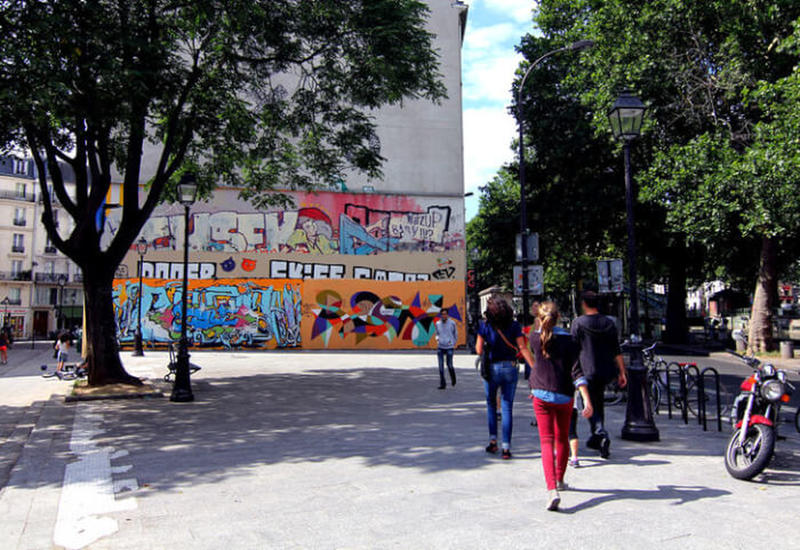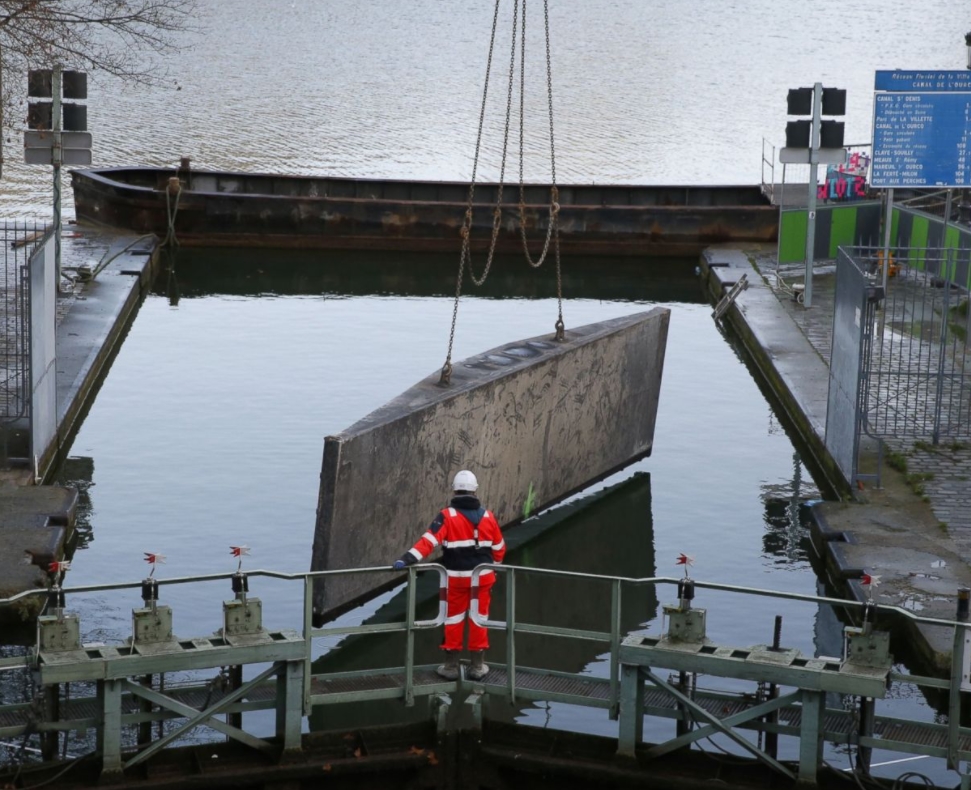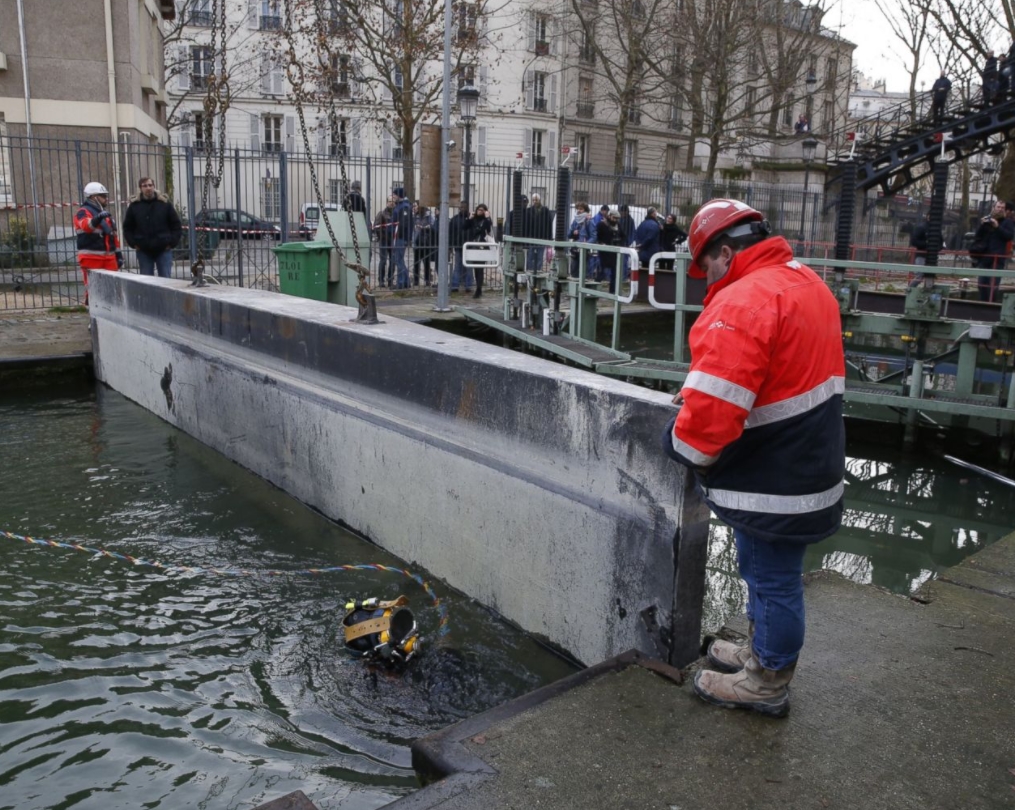Time to Drain It
The authorities took an in-depth look at the canal as the murky waters receded. It’s not every day that you get the opportunity to discover the secrets hiding in the water’s depths. The Parisian residents were about to learn something new about the city’s history.

Time To Drain It
An Important Water Source
The canal was completed once Napoleon Bonaparte approved the project. It was primarily created to offer safe drinking water to its 550,000 residents. However, it was clear to everyone that the population of 550,000 would grow drastically in the future.

An Important Water Source
More than This
Napoleon didn’t just approve plans for this canal to have access to water to residents. He also believed that this clean water access would help control the city’s health problems. Back then, several reports of dysentery and cholera were discovered.

More Than This
Fascinating History
This canal would also help deliver building materials and food to Parisians, as it was built to circle almost three miles across the city. Two canals were built with the same purpose, which was the Canal de l’Ourcq and Canal Saint-Denis.

Fascinating History
During the French Revolution
From the various canals constructed in this time, the Canal Saint-Martin is the most well-known. From the Place de la Bastille to the Bassin de l’Arsenal, this water source ran beneath the ground. The rich history of this canal made people eager to see what was beneath the surface.

During The French Revolution
The Canals Today
This Parisian canal is now a popular hangout for both tourists and locals. Residents commonly congregate on the banks of the Seine and in nearby cafes. However, tourists prefer to photograph the bridges and landmarks surrounding this waterway. Yet, why did authorities decide to drain it?

The Canals Today
What’s at the Bottom?
There’s no doubt that the canal certainly underwent many changes in its 200 years of existence. Every 10 to 15 years, the Parisian authorities would always try to empty it. They would get rid of what was at the bottom. However, this wasn’t a regular clean-up.

What’s At The Bottom?
The Process
Also known as the City of Light, Paris hid many secrets and the murky waters making up this canal obscured some. What could be found beneath the beloved Canal Saint-Martin captured the interest of Parisians. That’s why the draining operations were observed by many.

The Process
Waste from the First World War
The Canal Saint-Martin was first drained in 2001. During this time, they removed more than 40 tons of waste, including gold pennies, bombshells, and bullets. Additionally, they found a car from the same time. However, what could authorities expect to find this time around?

Waste From The First World War
The Cost
The enormous task of draining the canal had started and it took three months to remove almost 3 million cubic feet of water. Even though the city spent more than $10 million to do this, it was a necessary procedure.

The Cost
Gathering Crowds
The authorities had drained the remaining water in the canal on January 7th. After more than 15 years, the secrets of this canal were revealed. The bridges saw people from many walks of life. It was clear that everyone wanted to see what the authorities had found.

Gathering Crowds
A Surreal Moment
It was a massive occasion, as it wasn’t every day that you could look at the Canal Saint-Martin without any water in it. Onlookers couldn’t believe what they were seeing. It was a surreal sight to the bottom of the canal. Everyone was curious.

A Surreal Moment
The Living Creatures
Workers drained the canal until only 25 inches of water were left. After this, they waded through the water and searched for any items that were taking up residence. Approximately five tons of bream, trout, and carp were caught by the crew, which were relocated to better breeding grounds.

The Living Creatures
Tons of Garbage
Many items would find their way into the canal’s depths. One of these included many bicycles that were from the city’s Vèlib car-sharing system. Although 14,500 bikes were added to the Parisian streets align with a program in 2007, but many ended up in odd places.

Tons Of Garbage
Bizarre Findings
More findings surfaced as the draining process continued. Workers found wheelie bins and mopeds. There was even a toilet found at the bottom of the canal. These items needed to be removed because these contributed to the water’s murkiness.

Bizarre Findings
Finding Their Way to the Bottom
When interviewed, a lot of the residents compared this draining procedure to a weird submarine treasure hunt. Several couldn’t believe the amount of Vèlibs found in the water. It was believed that these bicycles were stolen and thrown in once the thieves were done.

Finding Their Way To The Bottom
A Filthy City
One onlooker stated, ‘That’s Paris for you.” It’s a filthy city and it appears it’s gotten worse in recent years. He was there when it was first drained, but he didn’t remember so much rubbish being found in the canal and claimed that the youth was using it as a trashcan.

A Filthy City
Peculiar Items Found
If you thought bicycles were a strange find, motorcycles were also found in these waters. Who knows how those got to the bottom of the Canal Saint-Martin, but this wasn’t the only peculiar thing workers found. Things continued to get odder.

Peculiar Items Found
Trash, Trash, and More Trash
Of course, workers didn’t just find living creatures and bicycles, they also found many expected items. These included traffic cones, shopping bags, and glass bottles. These findings didn’t pique many people’s interests. Residents were far more excited to discuss the more unusual objects.

Trash, Trash, And More Trash
An Office Chair
Onlookers were puzzled when they saw an office chair in the waters. Witnesses were skeptical of this discovery. How could an office chair end up in a canal? Was it possible that the owner was sick of working those growling corporate hours?

An Office Chair
Packing Up
Many people found it a lot of fun to develop theories on how these off items got into the canal. One of the items that was subject to these theories was a suitcase. It was rather revolting after being in the murky waters for who-know-how-long.

Packing Up
The Traffic Cones
A traffic cone had no business being at the bottom of the Canal Saint-Martin. Who could have placed it there? Possibly a driver filled with road rage looking to take it out on a helpless traffic cone, which led to it being thrown in the murky waters.

The Traffic Cones
Shopping Carts
One item that piqued a ton of interest was a shopping cart. Did someone accidentally push this cart into the canal after loading their shopping bags into their car? If so, they really did shop until they dropped. Nonetheless, this further proves that Paris is an exceptional shopping destination.

Shopping Carts
Saving the Fish
Workers continued draining the water from the Canal Saint-Martin. They worked hard to ensure they got all the fish to safety. The cleanup crew spent three continuous days catch these fish and relocating them to more suitable environments in the river.

Saving The Fish
Swimming in the River
Although the trash in the canal was a disheartening sight, people still had hope. The discoveries found in the Canal Saint-Martin brought attention to Paris’s littering issue. Leaders used this as an opportunity to talk about the situation. The deputy mayor stated that people might be able to swim in the canal in a few years.

Swimming In The River
An Expensive Process
Nobody truly understood how serious this issue was if the waterway wouldn’t have been drained. This canal area is known as prime real estate. However, many Parisians paying the price for this real estate weren’t aware of what was lying so close to their homes.

An Expensive Process
Costly Real Estate
The waterway had always looked aesthetically pleasing and lush, which contributed to the real estate’s high costs. It also served as an inspiration to numerous artists. Street art can be seen decorating the bank’s walls that offered even more culture to the area.

Costly Real Estate
Two Decades
The three canals dug across Paris took two decades to complete. These waterways made up more than 80 miles when combined. The Canal Saint-Martin was the one to connect the Canal de l’Ourcq and the Seine River together and attracted the most attention.

Two Decades
Adding to the Nightlife
If you know Paris, you’re aware that the neighborhood where the Canal Saint-Martin can be found is home to a vibrant nightlife scene. This previously quiet district now attracts numerous crowds of young people, which results in more waste in the waterway.

Adding To The Nightlife
The Canal’s Construction
The canal’s construction started in 1802 after Napoleon approved the project. It took approximately one decade to complete. Although this was a long process, it helped improve transportation methods across Paris for residents and was a worthwhile project completed by the city.

The Canal’s Construction
Its Route
The canal runs below the La Bastille and its origins are from the Seine’s Bassin de l’Arsenal. From here, the waterway travels near the Place de la République before making its way down to the Bassin de la Villette located in the north where it meets the Canal de l’Ourcq.

Its Route
Too Many Cans and Bottles
The workers found far too many bottles and cans while draining the waterway. We’re not talking a couple hundred empty cans and bottles. After completing this drainage operation, workers found hundreds of thousands of these items at the canal’s bottom.

Too Many Cans And Bottles
Its Length
The Canal Saint-Martin travels through the capital’s heart, which is three miles long. This includes the 10th arrondissement, which is best known for its fashion-forward neighborhood. Additionally, this area has gained immense popularity for its well-known tourist attractions and bustling nightlife.

Its Length
More Interesting Finds
More interesting items were unearthed from the murky waters. The crowds surrounding the canal got a good look at all the things the workers discovered. Among these various objects was an old-school stereo. From the looks of it, it had been down there for a while.

More Interesting Finds
Vintage Objects
Although cleaning out the canal is a procedure that’s repeated frequently, many vintage items are still being found during the cleaning. It’s perplexing to think about how these objects sunk to the bottom of the canal, especially since some predate the waterway’s last cleaning.

Vintage Objects
Something Sentimental
More items are discovered as the canal’s water is drained. You would expect to find filthy and old items at the bottom of the Canal Saint-Martin. However, the workers also found more peculiar discoveries, like a stuffed animal that seems to be relatively new.

Something Sentimental
Anger Management
This muddy chair is submerged in the murky water and completely covered in moss, making it appear quite haunting. We can automatically come up with various scenarios of how this chair landed up in the canal. Could have it been the result of rage? Or possibly a tragic accident?

Anger Management
A Lengthy Ordeal
Workers were required to spend hours ensuring everything went according to plan. They were responsible for the cleaning, relocating of the fish, and renovating of the waterway’s four double locks. It took them a little more than three months to complete.

A Lengthy Ordeal
Team Effort
Given the massive scope of this procedure, it’s only natural that a gigantic group of workers was involved in its completion. Hundreds of workers were involved in this cleaning and work efficiently to ensure everyone’s safety with the help of heavy machinery.

Team Effort
The Heavy Lifting
Cleaning the canal is a risky process because there are so many things that can rapidly go wrong. Given that this procedure happens every decade or so, this is an exciting event. It’s a massive task that requires the municipality to acquire the necessary equipment and machinery.

The Heavy Lifting




